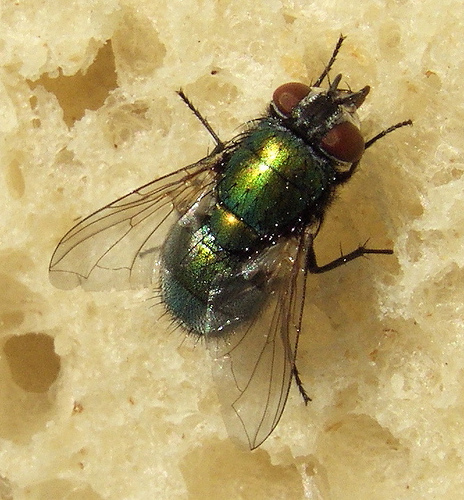Most would shy away from fugu, or puffer fish, but the Japanese love it. The internal organs and skin of the puffer fish contain a deadly poison called tetradotoxin, which causes paralysis of the diaphragm and death due to respiratory failure. It must be prepared by licensed cooks in order to remove the poisonous areas. Though it’s a dangerous meal, it’s been eaten for centuries.
It’s not just that one-in-one thousand fish are poisonous; each fish comes packed with a dose of death if not properly prepared. Statistics from the Tokyo Bureau of Social Welfare and Public Health indicate 20-44 incidents of fugu poisoning per year between 1996 and 2006 in the entire country, leading to 34-64 hospitalizations and 0-6 deaths per year, for an average fatality rate of 6.8%
Not only is it deadly, but fugu is costly. Most people consider it to have a weak taste, but Japanese gourmets will disagree. Chefs spend 7 to 8 years training in order to be certified to serve this treat.
An outbreak of E.coli in spinach or Salmonella in tomatoes leads to national recalls and mass consumer aversion as products and produce become stigmatized. Yet a fish that is positively poisonous is still sought out in countries like Japan and Taiwan. There is some speculation as to how popular fugu would be if it was known to be completely safe. Would there be a sharp decrease in demand for the dish, or would it continue to be a special meal?
The acceptance of fugu in Japanese culture is completely opposite of the Japanese attitude towards beef with BSE (bovine spongiform encephalopathy) commonly known as mad cow disease. Any meat that is at risk for containing traces of BSE is immediately removed from the food supply. What is the difference between dying from Creutzfeldt-Jakob disease, the human variant of BSE, and being poisoned by fish?
Whether it’s the taste of the fish or the thrill of knowing it could be the last meal, I plan to stick to salmon instead.
— Michelle Mazur is a first-year veterinary student at Kansas State University, hailing from Wichita, Kansas. She is an avid dog lover, a crafty seamstress, and a bit of a workaholic. She recently spent two weeks in Japan and took a lot of pictures of bathrooms.
Michelle Mazur is a first-year veterinary student at Kansas State University, hailing from Wichita, Kansas. She is an avid dog lover, a crafty seamstress, and a bit of a workaholic. She recently spent two weeks in Japan and took a lot of pictures of bathrooms.

.jpg) The
The 
 The report by principal food safety officer Alan Yates also reveals that officials sent 1,168 warning letters to establishments alerting them to contraventions of public health legislation.
The report by principal food safety officer Alan Yates also reveals that officials sent 1,168 warning letters to establishments alerting them to contraventions of public health legislation. Here,
Here, 

 "People ask me, how can you write those sensitive songs and then that trash, and I say, sometimes I feel real sensitive and sometimes I feel real trashy."
"People ask me, how can you write those sensitive songs and then that trash, and I say, sometimes I feel real sensitive and sometimes I feel real trashy."
 Wouldn’t have it any other way.
Wouldn’t have it any other way.
.jpg)
